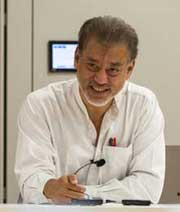Trade Deception Returns in Pan-Africanist Guise
ACCRA, Ghana, Apr 17 (IPS) - The World Bank has exaggerated probable gains from the African Continental Free Trade Area (AfCFTA) to promote partial and uneven trade liberalisation that is unlikely to enhance development on the continent.
Free trade, in theory
The Bank report claims significant net employment and income gains for all from joining the AfCFTA. Advocates claim it will accelerate African economic growth and progress, creating millions of jobs and raising incomes.

However, even mainstream economic theory and history do not support its claims about expected benefits. Even conventional trade theory does not claim that all trade liberalisation accelerates economic growth.
And even when it does, international trade mahaguru Jagdish Bhagwati noted long ago that the ensuing economic growth could be ‘immiserising’ when productivity gains accrue to consumers, not producers.
Nor does empirical evidence show trade liberalisation necessarily accelerating economic growth. Bhagwati has also shown preferential commercial agreements undermining free trade.
History shows today’s developed countries have been pragmatic and opportunistic. Typically, they only opened up after freer trade would benefit them while ‘kicking away the ladder’ for others trying to emulate them.
Most developing countries had partial trade liberalisation forced on them by modern European colonialism and structural adjustment from the 1980s. Often, they ended up with economic activities with ‘diminishing returns’, keeping them poor.
Alleged gains
Advocates claim trade liberalisation improves economic efficiency, implying production can be costlessly relocated internationally to produce more at less cost. Mainstream theory also maintains freer trade only improves efficiency under certain conditions:
- full employment, i.e., no unemployment or under-employment;
- no supply-side rigidities, with exporting firms able to quickly increase output, lower unit costs, and easily adjust to changing demand;
- an efficient market for risk exists, with affordable insurance for producers to cope with price volatility;
- ‘losers’ are compensated by ‘winners’ of trade liberalisation.
All these conditions have never been met anywhere, least of all in developing countries, especially the poorest ones. Most importantly, there has never been cross-border compensation of losers in the South by winners in the North.
Model distractions
For its report, The African Continental Free Trade Area: Economic and Distributional Effects, the Bank used computable general equilibrium (CGE) models to simulate some AfCFTA economic impacts.
However, the models’ unrealistic assumptions prevent meaningful assessment of their actual impacts. Thus, full employment and unchanging trade and fiscal balances – required by such CGE modelling – are presumed, with actual conditions assumed away and ignored!
The models are typically specified to favour trade liberalisation, invariably generating net positive economic impacts. Nonetheless, the gains are generally modest, sometimes negligible.
Hence, such apparent benefits depend on problematic assumptions and biased model specifications. With different assumptions and model parameters, findings change radically, e.g., changing government revenue affects public spending and, thus, aggregate demand.
The new findings may even undermine the case for trade liberalisation. For example, more realistic elasticities yield less impressive results. Hence, the models’ claims of gains from trade liberalisation have “dubious empirical relevance at best”.
Hence, “developing countries would be ill-advised to follow the radical recommendations of the World Bank’s liberalisation strategy insofar as it rests on results drawn from the current trade models.”
Job gain illusions
The Bank report admits its CGE simulations greatly qualify its claimed impacts on employment, unemployment and wages. It claims trade liberalisation reduces poverty by assuming very high ‘elasticities’ of poverty reduction due to greater foreign market access raising incomes.
It acknowledges the “analysis does not capture the effects of AfCFTA on job creation, but rather its impacts on job reallocation as employment shifts from sectors of comparative disadvantage to sectors of comparative advantage. This analysis, therefore, focuses on workers switching jobs or on labor displacement, not job creation.”
The report assumes total employment in Africa remains unchanged by trade policy effects. Hence, AfCFTA does not increase jobs; it only moves workers from one sector to another, raising incomes with higher wages, not more jobs.
What were this dubious exercise’s main employment results? First, agriculture’s share of jobs is projected to decline from 35.9% to 29.7% between 2020 and 2035. Second, the share of wholesale and retail trade workers will increase from 16.9% to 20.0%.
Third, wages of less-skilled workers will increase faster than for the more skilled, reducing the ‘skill premium’ and poverty among the former. Female wages will rise faster than men’s as more women are employed in labour-intensive activities. But the magnitude and significance of these trends are moot.
The simulations do not show the AfCFTA boosting value-addition and jobs. While manufacturing value-added would increase between 2020 and 2035 in 15 of the 24 countries covered, its share of output would only grow in six!
Learning from mistakes
Like other reports preceding it – including those for the African Union – the Bank study is based on unrealistic assumptions grossly understating the actual risks and costs of trade liberalisation.
Such studies provide a veneer of legitimacy for such policies. Their results depend on the data used and modellers’ choices. While seemingly impressive, they are of dubious relevance and value.
Trade liberalisation from the 1980s undermined Africa’s modest manufacturing capacity and food security, primarily developed post-independence. This worsened its protracted stagnation lasting into this century.
In 2017, economist Ndongo Samba Sylla warned the AfCFTA implies “suicide for African countries”. Regardless of its pan-Africanist pretensions, the AfCFTA risks resuming trade liberalisation’s earlier devastation.
IPS UN Bureau
Follow @IPSNewsUNBureau
Follow IPS News UN Bureau on Instagram
© Inter Press Service (2024) — All Rights Reserved. Original source: Inter Press Service
 Global Issues
Global Issues